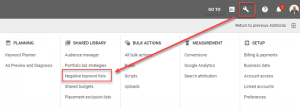— August 12, 2019
Embracing account-based marketing means focusing less on the traditional marketer’s favorite key metric—leads. While lead gen has a place in ABM, your goal is to shift away from stuffing the top of the funnel to focusing only on those accounts that have a high chance of converting.
As such, your top priorities will no longer be metrics like clickthrough rates, cost per lead, and cost per impression. Rather than trying to force lead gen metrics to fit your ABM strategy, reevaluate your approach to measurement so that it fits your new goals.
Alongside metrics like pipeline, closed-won deals, and revenue, there are five key categories that you should cover with your approach to ABM measurement—coverage, awareness, engagement, reach, and influence.
1. Coverage of ABM Data
After creating your target account list, the first metric you’ll want to track is how well your data covers the contacts within those buying teams. This isn’t about volume of data in your CRM. Rather, it’s all about maximizing data quality and relevance to ensure that every stage of the ABM process will be geared toward the right people at the right accounts.
In addition to basic contact information, you’ll want your coverage metric to include reviews of additional insights. This could include intent scoring, engagement history, or general overviews of the gaps in your database.
2. Awareness in Target Accounts
It’s the goal of every company to become known, liked, and trusted among its target audience. Even if you have the greatest products and services, you still face an uphill battle when trying to generate awareness among your high-priority accounts.
Traditionally, brand awareness has been difficult for marketers to measure quantitatively. This doesn’t necessarily change just because you shift your focus to account-based marketing.
However, all hope is not lost when trying to track awareness in target accounts. Two ways to measure awareness is through target account interactions and specific insights into traffic. Tracking how often contacts at your target accounts interact with your marketing and sales teams indicate the level of awareness your brand has among active buyers. And with certain analytics tools and third-party intent data, you can gain a better understanding of contact behavior both on your website and those of your competitors.
3. Engagement with Buying Teams
Tracking interactions to gauge brand awareness is one thing. The engagement category of ABM metrics takes things a step further to provide insight into when leads are qualified. There are different ways you can track engagement, but it essentially comes down to time. How much time are target contacts spending engaging with your content and sales team?
You could literally assign values to individual activities to track time spent engaging with your brand. Or, you could focus on more general activity tracking and score behavior the same way you’ve always scored leads. This data could come from your website activity, automated marketing metrics, product usage, social media engagement, or interactions with sales teams.
Taking engagement scores a step further with intent data will help create a more complete picture of target accounts so you can understand who to prioritize and when to reach out to them.
4. Reach Across Your Target Account List
There are different ways you can approach account-based marketing. There’s the narrow approach where you focus on a small number of high-value accounts. There’s a more mid-level approach where you target a higher volume of accounts with the expectation that conversion rates decrease. And then there’s the approach that’s most like lead gen, where you cast the widest net your team can support in an effort to reach as much of the active market as possible.
Tracking reach is about finding the waste in your ABM strategy (regardless of which approach you take). For example, personalized content is a hallmark of ABM. But are you finding more success with personalized eBooks as opposed to a webinar-based approach? Evaluating each aspect of your marketing campaigns will, over time, help you determine the most efficient ways to reach your target accounts.
5. Influence of Sales Outcomes
Are your ABM activities really influencing sales outcomes? That’s the million-dollar question for so many marketers as they try to optimize an ABM strategy.
In this category, you want to correlate marketing activities with metrics like deal velocity, win rates, retention, and overall customer satisfaction. As you continue to experiment with ABM tactics, you’ll generate insights into what exactly generates the best results for your business. And as you optimize the strategy according to these insights, you’ll close the gap between sales and marketing.
Supporting ABM with the Right Data
These ABM metric categories shouldn’t be viewed in siloes. Each one feeds into the next to support the overall success of your ABM strategy.
This is why it’s so important to create a strong foundation of data before diving head first into ABM execution. Having the right data will set you on the right path to track coverage, which in turn will help you maximize the performance of other KPIs as well.
Investing in third-party intent data can help you fill critical gaps in your databases that would otherwise hurt the performance of each ABM metric.
If you want to learn more about working with intent data, download our free report, Demystifying B2B Purchase Intent Data.
Business & Finance Articles on Business 2 Community
(51)
Report Post






